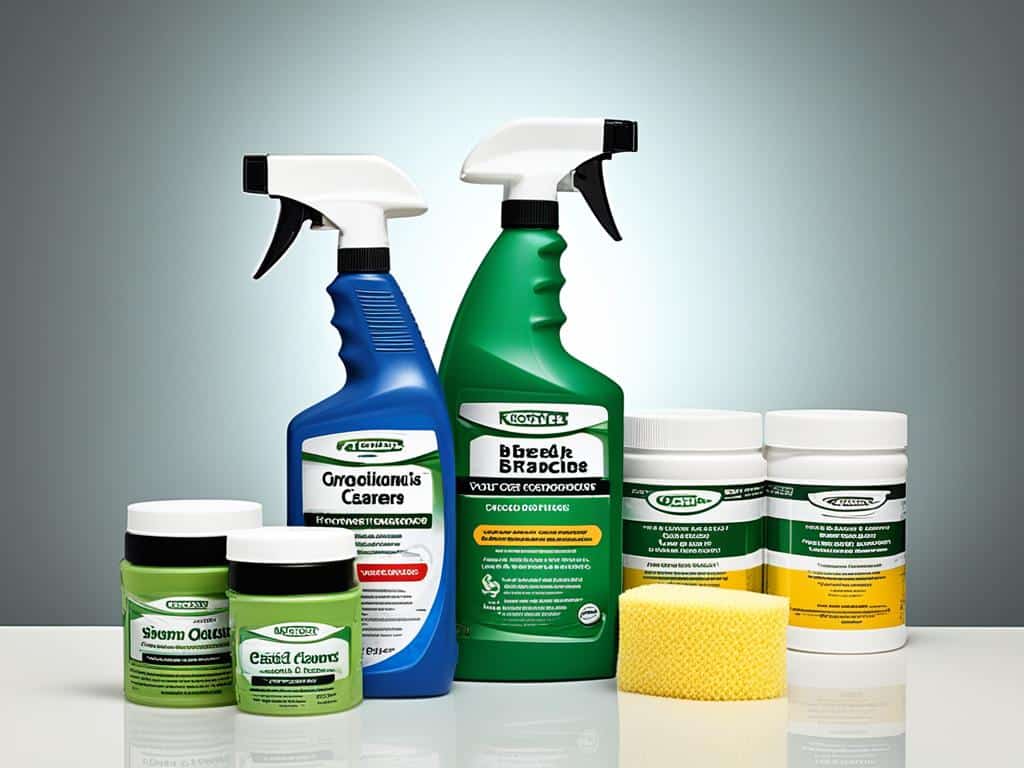
Have you ever wondered what’s really in your brake cleaning products? You might’ve heard about VOCs—volatile organic compounds—but why are they so important in automotive maintenance?
VOCs are chemicals found in many products, including brake cleaners. They evaporate quickly and help remove grease and grime from brake parts. Understanding these compounds is key to effective vehicle maintenance and your health.
Why should you care? Knowing the ingredients in your brake cleaner helps you balance cleaning power and safety. Stay tuned as we dive deeper into brake cleaners and the role of VOCs.
Understanding the Basics of Brake Cleaner
Brake cleaners are essential in vehicle maintenance, designed to eliminate grease, dirt, and brake fluid from brake parts. These products ensure your brakes function optimally by maintaining cleanliness.
Two main types of brake cleaners are popular: non-chlorinated brake cleaner and chlorinated brake cleaner. Non-chlorinated brake cleaner is usually less aggressive but is safer for use, while chlorinated brake cleaner can be more effective at cutting through grime but comes with health and environmental concerns.
Both types have distinct applications and common ingredients. Non-chlorinated options may use heptane or acetone, while chlorinated versions often contain trichloroethylene. Understanding these differences can help you choose the right product for your specific vehicle maintenance needs.
What Are VOCs?
Volatile organic compounds, or VOCs, are carbon-based chemicals that evaporate easily at room temperature. These compounds are found in many common household and automotive products, such as paints, cleaning agents, and, of course, brake cleaners. Understanding their chemical properties helps in realizing why VOCs are so prevalent and, at the same time, concerning.
The chemical properties of volatile organic compounds allow them to evaporate quickly into the air. This rapid evaporation can lead to a variety of health implications. For example, exposure to high levels of VOCs can cause headaches, dizziness, and respiratory issues. Long-term exposure has been linked to more serious health problems such as liver and kidney damage.
Here is a table summarizing some common sources of VOCs and their potential health implications:
| Common Sources | Examples | Health Implications |
|---|---|---|
| Household Products | Paints, varnishes, disinfectants | Headaches, eye irritation, liver damage |
| Automotive Products | Brake cleaners, fuel additives | Dizziness, respiratory issues, kidney damage |
| Office Equipment | Printers, copiers, adhesives | Irritation of the eyes, nose, throat |
| Building Materials | Carpets, pressed wood products | Nausea, liver and kidney issues |
The widespread use of volatile organic compounds in everyday items underlines the importance of being aware of their health implications. Recognizing the presence of VOCs in your environment can help you mitigate potential health risks.
What Is VOC in Brake Cleaner
Understanding the role of volatile organic compounds (VOCs) in brake cleaners is essential. These chemical solvents play a significant part in the cleaning process. While they are highly effective, they also come with some drawbacks related to air quality and environmental regulations.

Pros of VOC in Brake Cleaner
The primary advantage of VOCs lies in their solvent effectiveness. They can easily dissolve grease, dirt, and brake fluid. This ensures that your brake components are clean and can perform optimally. VOCs help in achieving superior results quickly, making them a convenient choice for many automotive enthusiasts.
Cons of VOC in Brake Cleaner
However, VOCs come with their share of challenges. One of the main concerns is their impact on air quality. These compounds can evaporate and contribute to smog formation, posing health risks. Additionally, regulations on VOCs are getting stricter. This means increased restrictions and potential compliance issues for manufacturers and consumers.
Environmental Impact of VOCs in Brake Cleaner
VOCs in brake cleaners pose significant environmental concerns. When released, these toxic chemicals contribute to ground-level ozone formation, leading to smog and poor air quality. This formation can affect ecosystems and degrade both indoor and outdoor environments.
Emissions from VOCs don’t just harm the air we breathe; they also threaten local wildlife. Toxic chemicals can seep into water sources, impacting aquatic life and surrounding habitats. This holistic damage underscores the importance of understanding environmental regulations aimed at curbing VOC usage and reducing emissions.
Recent environmental regulations target a decrease in VOC emissions. These rules are crucial for maintaining healthier ecosystems and improving air quality. Embracing products with lower VOC content can lessen the toxic chemicals harming our planet, paving the way for a more sustainable future.
Choosing a Low-VOC Brake Cleaner
Selecting a low-VOC brake cleaner is one way to embrace eco-friendly products during your vehicle maintenance routine. These alternatives prioritize both effectiveness and health benefits without compromising on cleaning performance.
Advantages of Low-VOC Brake Cleaners
Opting for low-VOC brake cleaners provides several health benefits. You reduce exposure to harmful fumes, contributing to improved air quality in the garage and beyond. These products align well with sustainable vehicle maintenance practices, minimizing environmental impact.
Where to Find Low-VOC Options
You can find low-VOC brake cleaners at many auto parts stores and online retailers. Look for clear labeling that highlights low VOC content. This way, you ensure you’re investing in products that support eco-friendly practices and promote better air quality.
Conclusion
Your journey through understanding VOCs in brake cleaners has laid the foundation for informed decisions in automotive maintenance. By scrutinizing the chemical makeup of these products, you’ve taken a proactive step toward responsible maintenance. The balance between effective cleaning and safeguarding environmental health matters more than ever.
Considering both the pros and cons of VOCs will enable you to choose the right products for your braking systems. Remember, VOCs serve a significant role in cleaning efficiency, but their impact on health and the environment shouldn’t be overlooked. This awareness empowers you to opt for products that support both your vehicle’s performance and a cleaner planet.
As we navigate evolving environmental health concerns and regulations, your choices signal a commitment to sustainable practices. Choosing low-VOC alternatives not only improves air quality but also aligns with the broader goal of responsible maintenance. Keep this knowledge at the forefront of your purchasing decisions, and drive toward a safer, greener future.



